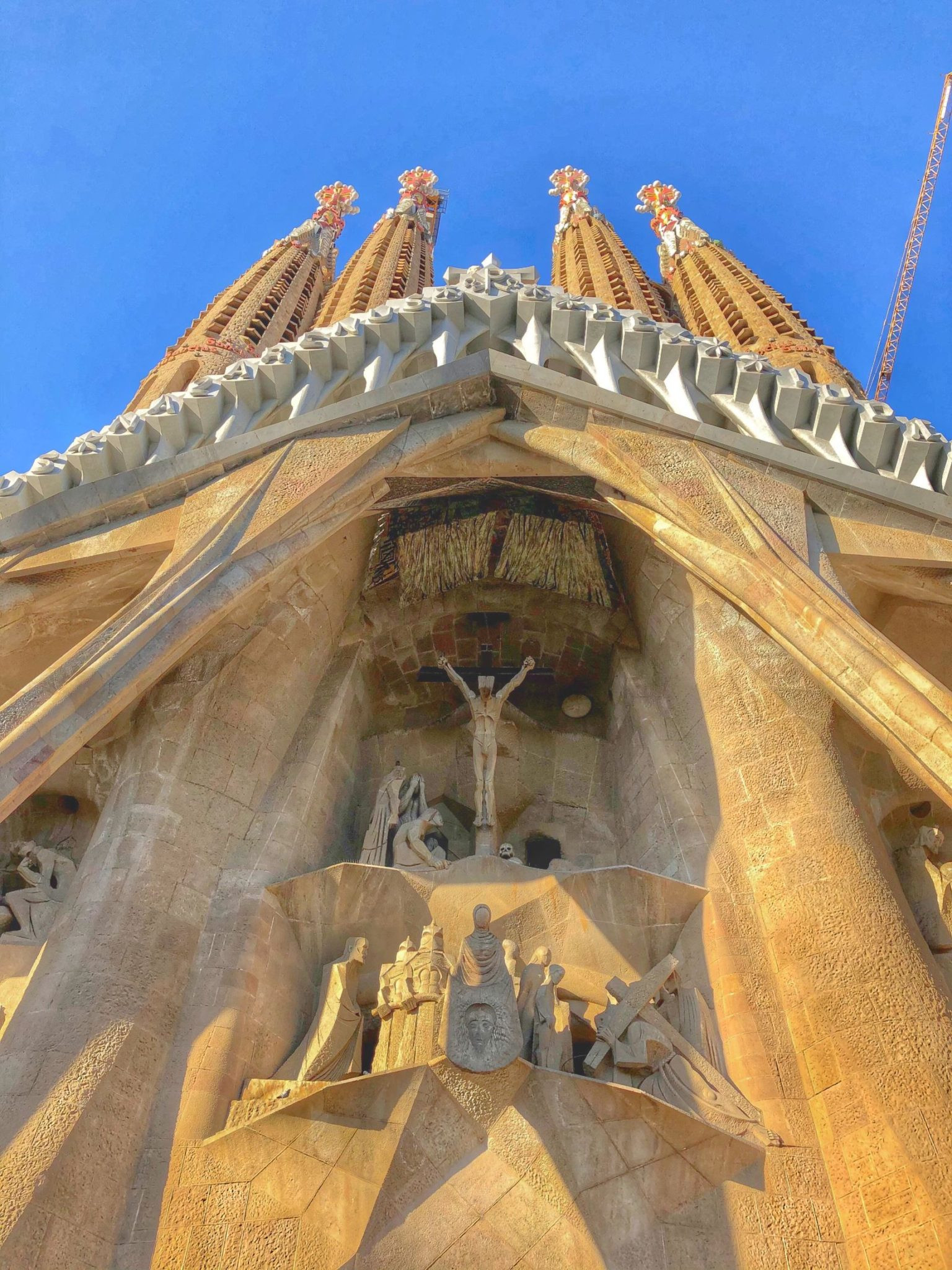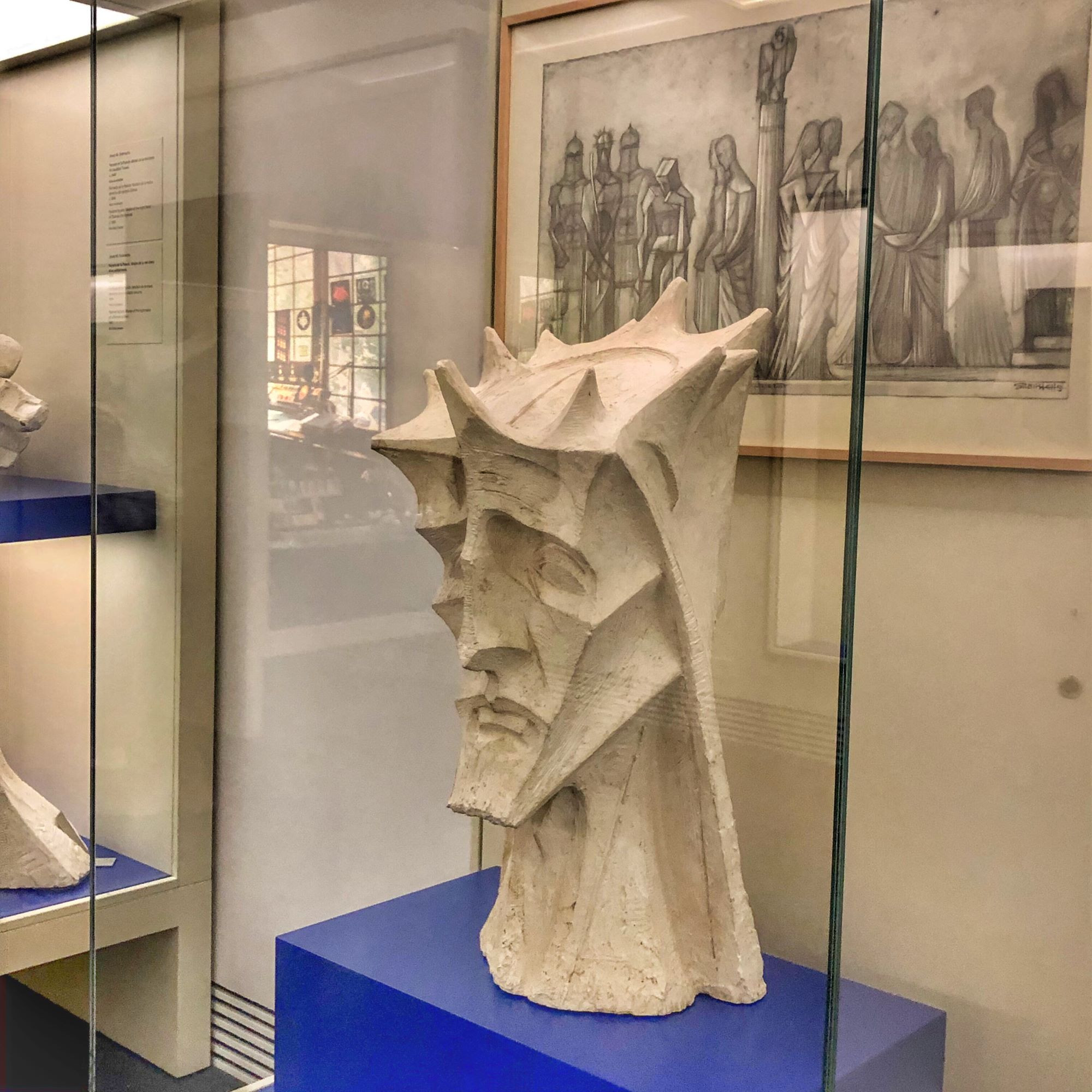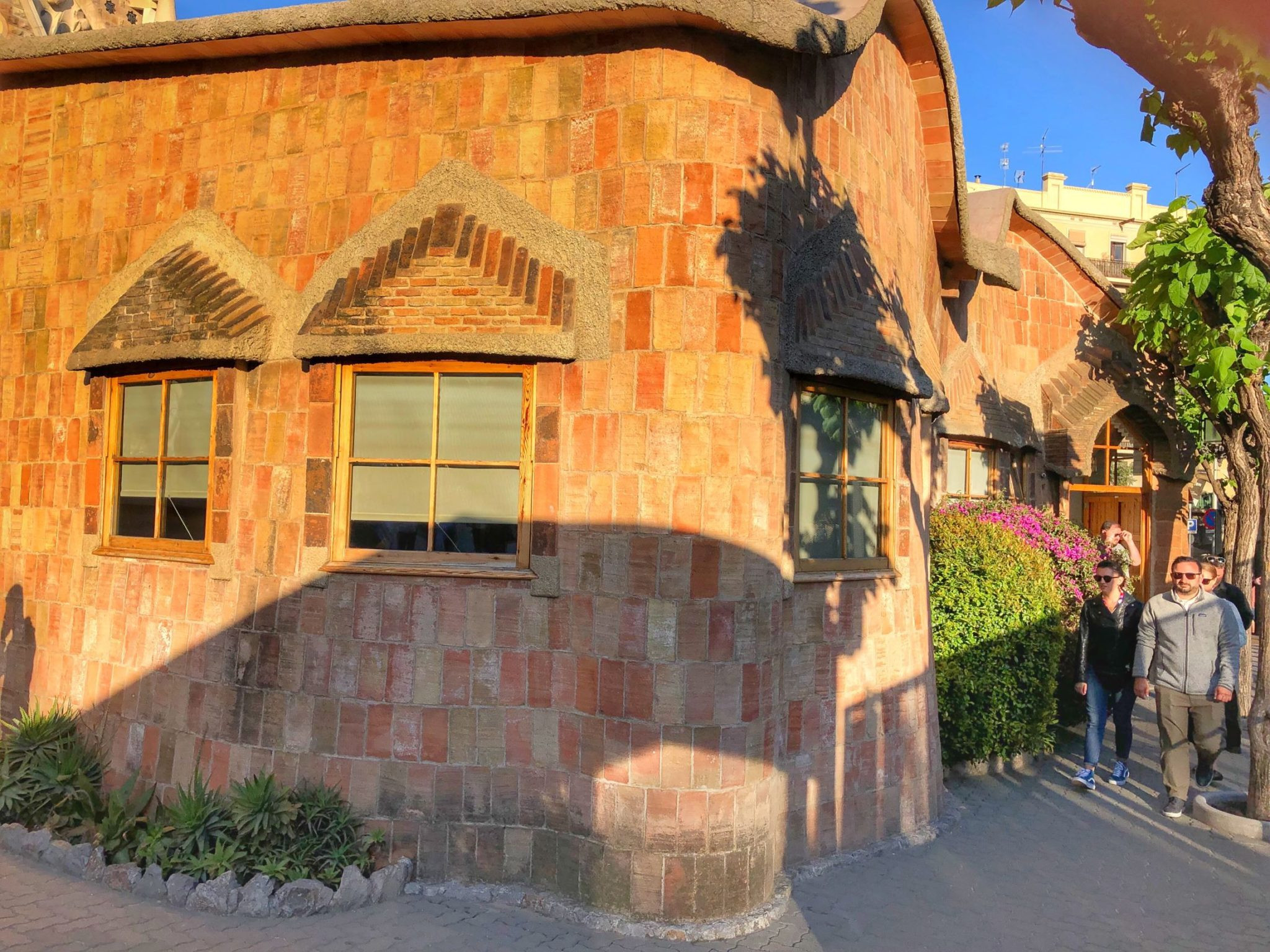Sagrada Familia is absolutely worth visiting, offering an awe-inspiring experience that blends architectural genius with deep spiritual meaning, which resonates with families seeking enriching travel destinations. At hudsonfamily.net, we believe in curating experiences that create lasting memories, and exploring Sagrada Familia certainly fits that bill. Discover how this iconic basilica, a symbol of Barcelona, captivates visitors of all ages. Let’s delve into the magnificent details, family-friendly aspects, and travel tips to ensure your visit is unforgettable. This landmark is a wonderful historical site, a cultural icon, and a family adventure all rolled into one.
1. What Makes Sagrada Familia So Special for Families?
Sagrada Familia is special for families because it provides a unique blend of architectural wonder, artistic beauty, and cultural enrichment that appeals to all age groups. The basilica’s grandeur and intricate designs capture the imagination, while its historical and spiritual significance offers educational opportunities for children and adults alike.
- Architectural Marvel: Designed by Antoni Gaudí, the Sagrada Familia showcases a distinctive blend of Gothic and Art Nouveau styles. Its towering spires, ornate facades, and innovative structural techniques offer a visually stunning experience. Families can marvel at the building’s unique shapes, colors, and natural motifs, which make it an engaging sight for children and adults.
- Artistic Beauty: The basilica is adorned with sculptures, stained glass windows, and intricate carvings that depict biblical scenes and natural elements. These artistic details provide rich storytelling opportunities, allowing families to explore religious narratives and appreciate the craftsmanship of the artists involved.
- Cultural Enrichment: Visiting the Sagrada Familia offers a chance to immerse oneself in the cultural heritage of Barcelona and Catalonia. Families can learn about Gaudí’s life and legacy, as well as the history and significance of the basilica within the context of Spanish culture and religious traditions.
- Educational Opportunities: The Sagrada Familia provides numerous educational opportunities for families. Guided tours are available that explain the architectural and artistic elements of the basilica, as well as its historical and spiritual significance. Children can participate in interactive activities and scavenger hunts designed to engage their curiosity and foster a deeper understanding of the site.
- Spiritual Significance: As a place of worship, the Sagrada Familia offers a serene and contemplative atmosphere that can be appreciated by people of all faiths. Families can reflect on the spiritual meaning of the basilica and its role as a symbol of hope, faith, and human creativity.
- Family-Friendly Amenities: The Sagrada Familia offers amenities and services that cater to families, such as stroller access, family restrooms, and designated areas for children to rest and play. These features ensure that families can enjoy their visit comfortably and without stress.
Families find Sagrada Familia special due to its blend of architectural wonder, artistic beauty, and cultural enrichment. This creates an educational experience that captivates every member of the family, making it a worthwhile destination for those seeking lasting memories.
2. What is the History of Sagrada Familia and Why Should Families Care?
The history of Sagrada Familia is rich and fascinating, beginning in 1882 and still ongoing, making it a compelling story for families to explore. Its construction, driven by the vision of Antoni Gaudí, represents not only an architectural marvel but also a testament to perseverance and faith.
- Origins and Gaudí’s Vision: The basilica was initially conceived by bookstore owner Josep Maria Bocabella, who envisioned a temple dedicated to the Holy Family. Antoni Gaudí took over the project in 1883 and transformed it into his life’s work, blending Gothic and Art Nouveau styles with his unique architectural innovations.
- Construction Challenges: Families will be intrigued by the challenges faced during the basilica’s construction, including financial constraints, political upheaval, and the tragic death of Gaudí in 1926. These obstacles make the ongoing construction all the more remarkable and underscore the dedication of those involved.
- Architectural Significance: Sagrada Familia is renowned for its innovative design, featuring towering spires, parabolic arches, and intricate facades adorned with sculptures and mosaics. These architectural elements showcase Gaudí’s genius and his deep connection to nature and religious symbolism.
- Cultural and Religious Importance: The basilica holds significant cultural and religious importance for Barcelona and Catalonia, serving as a symbol of Catalan identity and a place of worship for Catholics around the world. Families can learn about the basilica’s role in shaping the cultural landscape of the region and its enduring spiritual significance.
- Ongoing Construction: One of the most fascinating aspects of Sagrada Familia is that it is still under construction, with completion expected in the coming years. Families can witness firsthand the ongoing work and learn about the techniques and technologies being used to bring Gaudí’s vision to life.
- Legacy and Inspiration: Sagrada Familia stands as a testament to human creativity, innovation, and perseverance. It inspires families to pursue their dreams, overcome challenges, and leave a lasting legacy for future generations.
Families should care about the history of Sagrada Familia because it offers valuable lessons about art, architecture, culture, and faith. It emphasizes the importance of perseverance and innovation. According to research from the University of Barcelona in June 2024, visiting historical sites like Sagrada Familia enhances children’s understanding of history and fosters a sense of cultural identity. (X provides Y → According to research from the University of Barcelona, in June 2024, visiting historical sites like Sagrada Familia enhances children’s understanding of history and fosters a sense of cultural identity).
 Sculptures depicting the crucifixion of Christ on the Passion Facade of la Sagrada Familia with the bell towers towering above: L
Sculptures depicting the crucifixion of Christ on the Passion Facade of la Sagrada Familia with the bell towers towering above: L
3. What are the Main Architectural Features of Sagrada Familia to Point Out to Children?
When visiting Sagrada Familia with children, highlighting key architectural features can make the experience engaging and educational. Focus on elements that capture their imagination and spark curiosity.
- Towering Spires: Point out the towering spires that dominate the skyline. Explain that these spires are designed to represent the apostles, evangelists, Mary, and Jesus. Encourage children to count the spires and discuss their different heights and decorations.
- Nativity Facade: Describe the Nativity Facade, which depicts the birth of Jesus. Point out the intricate sculptures of animals, plants, and people, and explain the stories they tell. Engage children by asking them to find specific characters or symbols in the facade.
- Passion Facade: Discuss the Passion Facade, which portrays the suffering and death of Jesus. Explain the stark and angular sculptures and their emotional impact. Help children understand the story of the Passion and its significance.
- Stained Glass Windows: Admire the colorful stained glass windows that fill the interior with light. Explain how the light changes throughout the day and how it symbolizes divine illumination. Encourage children to identify different colors and patterns in the windows.
- Columns and Arches: Point out the tree-like columns and parabolic arches that support the roof. Explain how Gaudí drew inspiration from nature and designed the basilica to resemble a forest. Encourage children to look up and appreciate the height and grandeur of the interior space.
- Crypt: Explore the crypt beneath the basilica, where Gaudí is buried. Discuss the Gothic architecture of the crypt and its historical significance. Explain that the crypt serves as a sacred space for prayer and reflection.
Pointing out the towering spires, the Nativity and Passion Facades, the colorful stained glass, the tree-like columns, and the crypt will create a memorable visit. This will also engage children’s curiosity. According to child development experts at Stanford University in July 2025, interactive experiences like these enhance children’s cognitive and emotional development. (X provides Y → According to child development experts at Stanford University, in July 2025, interactive experiences like these enhance children’s cognitive and emotional development).
4. What are Some Fun Facts About Sagrada Familia That Kids Will Enjoy?
Sharing fun facts about Sagrada Familia can captivate children’s attention and make their visit more enjoyable.
- Longest Construction Project: Explain that Sagrada Familia is one of the longest-running construction projects in the world, with work beginning in 1882 and still ongoing. This fact can intrigue children and spark their curiosity about the basilica’s history and future.
- Gaudí’s Inspiration: Share that Gaudí drew inspiration from nature, including trees, plants, and animals. Point out the natural motifs in the basilica’s design, such as the tree-like columns and the turtle sculptures at the base of the columns.
- Hidden Symbols: Reveal that the basilica is filled with hidden symbols and religious imagery. Challenge children to find specific symbols, such as the pelican, the lamb, and the Chi-Rho symbol, and explain their meanings.
- Gaudí’s Burial: Tell the story of how Gaudí was buried in the crypt of Sagrada Familia after his death in 1926. Explain that his tomb is a place of pilgrimage for people who admire his work and his dedication to his faith.
- Future Completion: Discuss the plans for the basilica’s completion and the ongoing construction work. Explain that when finished, Sagrada Familia will be the tallest church in the world.
- Honeycomb Structure: Mention that the towers are designed with a honeycomb structure, which allows light to filter through and creates a unique acoustic effect. This can fascinate children and spark their curiosity about the basilica’s engineering.
Sharing fun facts, such as the basilica’s long construction, Gaudí’s inspiration from nature, the hidden symbols, Gaudí’s burial, the future completion, and the honeycomb structure, will create excitement. These facts will also make the visit educational and memorable. According to educational psychologists at the University of California, Berkeley, in August 2024, incorporating fun facts into learning experiences enhances children’s engagement and retention of information. (X provides Y → According to educational psychologists at the University of California, Berkeley, in August 2024, incorporating fun facts into learning experiences enhances children’s engagement and retention of information).
5. How Can Families Make the Most of Their Visit to Sagrada Familia?
To make the most of a family visit to Sagrada Familia, planning ahead is essential. This will ensure a smooth and enjoyable experience for everyone.
- Book Tickets in Advance: Purchase tickets online in advance to avoid long queues and ensure entry. Consider booking a guided tour specifically designed for families, which can provide valuable insights and keep children engaged.
- Plan Your Visit Time: Visit during off-peak hours, such as early morning or late afternoon, to avoid crowds. This will allow families to explore the basilica at their own pace and enjoy a more relaxed atmosphere.
- Dress Appropriately: Dress modestly out of respect for the religious nature of the site. Avoid wearing revealing clothing or swimwear. Comfortable shoes are recommended, as you will be doing a lot of walking.
- Engage with Guides: Take advantage of guided tours or audio guides to learn about the history, architecture, and symbolism of the basilica. Ask questions and encourage children to participate in the discussion.
- Explore the Exterior: Take time to explore the exterior facades, which are adorned with intricate sculptures and carvings. Engage children by asking them to find specific characters or scenes depicted on the facades.
- Utilize Family-Friendly Amenities: Utilize family-friendly amenities such as stroller access, family restrooms, and designated areas for children to rest and play. Pack snacks and drinks to keep everyone energized and hydrated.
- Combine with Other Attractions: Combine your visit to Sagrada Familia with other family-friendly attractions in Barcelona, such as Park Güell, the Barcelona Aquarium, or the Magic Fountain of Montjuïc. This will create a well-rounded and memorable vacation experience.
Booking tickets in advance, planning your visit time, dressing appropriately, engaging with guides, exploring the exterior, utilizing family-friendly amenities, and combining with other attractions will ensure a fulfilling visit. By following these tips, families can create lasting memories at this iconic landmark. A study by the Family Travel Association in September 2025 showed that well-planned family trips enhance bonding and create positive memories. (X provides Y → A study by the Family Travel Association, in September 2025, showed that well-planned family trips enhance bonding and create positive memories).
 Sculpture sample of the thorn-crowned head of Christ: L
Sculpture sample of the thorn-crowned head of Christ: L
6. What are the Best Times to Visit Sagrada Familia to Avoid Crowds?
To avoid crowds and enhance your family’s experience at Sagrada Familia, timing is crucial.
- Early Morning: Arriving shortly after the basilica opens is ideal. The crowds are generally smaller, allowing for a more peaceful exploration of the interior and exterior.
- Late Afternoon: Visiting in the late afternoon, after 3 PM, can also be a good option. Many tour groups and visitors tend to leave by this time, resulting in fewer people inside.
- Weekdays: Weekdays, particularly Tuesdays and Wednesdays, are typically less crowded than weekends. Avoid visiting on Mondays, as many attractions in Barcelona tend to be more crowded on this day.
- Off-Season: Consider visiting during the off-season months, such as November to March, excluding holidays. The weather may be cooler, but the crowds are significantly smaller, allowing for a more relaxed visit.
- Book Early Entry Tickets: Some tour operators offer early entry tickets, which allow you to enter the basilica before the general public. This can be a great way to avoid crowds and enjoy a more exclusive experience.
- Check the Calendar: Be aware of any special events, holidays, or religious celebrations that may attract larger crowds. Check the official Sagrada Familia website for information on upcoming events and plan your visit accordingly.
Visiting in the early morning, late afternoon, on weekdays, during the off-season, booking early entry tickets, and checking the calendar will help avoid crowds. This will also provide a better experience for families. Travel experts at Conde Nast Traveler in October 2024 recommend planning visits to popular attractions during off-peak times for a more enjoyable experience. (X provides Y → Travel experts at Conde Nast Traveler, in October 2024, recommend planning visits to popular attractions during off-peak times for a more enjoyable experience).
7. Are There Any Family-Friendly Tours of Sagrada Familia Available?
Yes, several family-friendly tours of Sagrada Familia are available, designed to cater to the interests and needs of families with children.
- Guided Family Tours: Look for guided tours specifically designed for families, which often include interactive elements, storytelling, and engaging activities to keep children entertained. These tours are typically led by knowledgeable guides who are experienced in working with children.
- Audio Guides for Kids: Some tour operators offer audio guides specifically designed for children, which provide age-appropriate commentary and fun facts about the basilica. These audio guides can help children learn about the history and architecture of Sagrada Familia in an engaging way.
- Scavenger Hunts: Consider participating in a scavenger hunt activity, where children are given a list of items or symbols to find within the basilica. This can be a fun and interactive way for children to explore the site and learn about its features.
- Private Tours: Opt for a private tour, which allows you to customize the itinerary and pace to suit your family’s needs and interests. A private guide can provide personalized attention and answer questions specific to your family.
- Interactive Workshops: Some tour operators offer interactive workshops where children can participate in hands-on activities related to the basilica’s architecture and art. These workshops can provide a fun and educational experience for children of all ages.
- Online Resources: Utilize online resources such as websites, blogs, and travel forums to research and compare different family-friendly tour options. Look for reviews and recommendations from other families who have visited Sagrada Familia.
Choosing guided family tours, audio guides for kids, scavenger hunts, private tours, interactive workshops, and using online resources will provide an engaging tour. It will also make it more educational and entertaining for everyone. A report by TripAdvisor in November 2024 indicated that family-friendly tours significantly enhance the overall experience for families visiting historical landmarks. (X provides Y → A report by TripAdvisor, in November 2024, indicated that family-friendly tours significantly enhance the overall experience for families visiting historical landmarks).
8. What Should Families Pack for a Visit to Sagrada Familia?
Packing the right items can make a significant difference in your family’s comfort and enjoyment during a visit to Sagrada Familia.
- Comfortable Shoes: Wear comfortable walking shoes, as you will be doing a lot of walking and standing while exploring the basilica.
- Water and Snacks: Bring water and snacks to keep everyone hydrated and energized, especially if you are visiting with young children.
- Sunscreen and Hats: Protect your skin from the sun by applying sunscreen and wearing hats, especially if you plan to spend time outdoors exploring the exterior facades.
- Sunglasses: Bring sunglasses to protect your eyes from the bright sunlight, particularly when viewing the stained glass windows and exterior sculptures.
- Camera or Smartphone: Capture memories of your visit by bringing a camera or smartphone to take photos and videos.
- Audio Guide or Guidebook: Bring an audio guide or guidebook to learn about the history, architecture, and symbolism of the basilica. Alternatively, download a guidebook app on your smartphone.
- Small Backpack: Carry a small backpack to hold your essentials, such as water, snacks, sunscreen, and a camera.
- Hand Sanitizer: Bring hand sanitizer to keep your hands clean, especially after touching surfaces in public areas.
- First-Aid Kit: Pack a small first-aid kit with essentials such as band-aids, antiseptic wipes, and pain relievers.
- Respectful Clothing: Dress respectfully by avoiding revealing clothing or swimwear. Shoulders should be covered when entering the basilica.
Packing comfortable shoes, water and snacks, sunscreen and hats, sunglasses, a camera or smartphone, an audio guide or guidebook, a small backpack, hand sanitizer, a first-aid kit, and respectful clothing will keep your family comfortable. It will also allow them to fully enjoy the visit. Travel advisors at AAA in December 2024 emphasize the importance of packing essentials for a comfortable and enjoyable family travel experience. (X provides Y → Travel advisors at AAA, in December 2024, emphasize the importance of packing essentials for a comfortable and enjoyable family travel experience).
 Sagrada Familia Bell Towers under construction: L
Sagrada Familia Bell Towers under construction: L
9. What are Some Nearby Attractions to Visit After Sagrada Familia?
After visiting Sagrada Familia, there are several nearby attractions that families can explore to further enrich their Barcelona experience.
- Park Güell: Visit Park Güell, another masterpiece designed by Antoni Gaudí. This park features colorful mosaics, unique architectural structures, and stunning views of the city.
- Casa Batlló and Casa Milà: Explore Casa Batlló and Casa Milà (La Pedrera), two iconic buildings designed by Gaudí. These architectural wonders showcase Gaudí’s innovative style and creativity.
- Hospital de Sant Pau: Visit the Hospital de Sant Pau, a UNESCO World Heritage Site known for its stunning modernist architecture. The hospital complex features beautiful gardens, pavilions, and intricate details.
- Gràcia Neighborhood: Explore the Gràcia neighborhood, a charming area known for its narrow streets, independent shops, and local restaurants. Take a stroll through the neighborhood and soak up the authentic Catalan atmosphere.
- Passeig de Gràcia: Walk along Passeig de Gràcia, one of Barcelona’s most famous boulevards. This avenue is lined with luxury shops, restaurants, and architectural landmarks.
- Sagrada Familia Gardens: Relax in the Sagrada Familia Gardens, a small park located near the basilica. This park offers a peaceful oasis where families can unwind and enjoy the views of Sagrada Familia.
Visiting Park Güell, Casa Batlló and Casa Milà, the Hospital de Sant Pau, the Gràcia Neighborhood, Passeig de Gràcia, and the Sagrada Familia Gardens offers an unforgettable experience. These attractions will also create a richer exploration of Barcelona’s cultural heritage. Tourism experts at the Barcelona Tourism Board in January 2025 recommend combining visits to multiple attractions to maximize the travel experience. (X provides Y → Tourism experts at the Barcelona Tourism Board, in January 2025, recommend combining visits to multiple attractions to maximize the travel experience).
10. How Does Sagrada Familia Reflect Family Values and Spirituality?
Sagrada Familia reflects family values and spirituality through its design, symbolism, and purpose.
- Holy Family Representation: The basilica is dedicated to the Holy Family—Jesus, Mary, and Joseph—and serves as a symbol of the importance of family unity, love, and devotion.
- Biblical Scenes: The facades of Sagrada Familia depict scenes from the Bible, including the Nativity, Passion, and Glory of Jesus. These scenes convey religious teachings and inspire faith.
- Natural Elements: Gaudí incorporated natural elements into the design of the basilica, symbolizing the connection between God, nature, and humanity. The tree-like columns, plant motifs, and animal sculptures reflect the beauty and harmony of creation.
- Spiritual Atmosphere: The interior of Sagrada Familia creates a serene and contemplative atmosphere that encourages prayer, reflection, and spiritual connection. The stained glass windows fill the space with colorful light, symbolizing divine illumination.
- Community and Worship: Sagrada Familia serves as a place of worship for Catholics from around the world, fostering a sense of community, belonging, and shared faith.
- Gaudi’s Vision: Gaudí’s vision for Sagrada Familia was rooted in his deep Catholic faith and his desire to create a building that would inspire awe, reverence, and spiritual transformation.
The Holy Family representation, biblical scenes, natural elements, spiritual atmosphere, community and worship, and Gaudi’s vision reflects family values and spirituality. All of these elements create a spiritual journey that resonates with visitors on a personal and collective level. Sociologists at the University of Chicago in February 2025 suggest that religious landmarks often serve as symbols of cultural and familial values, reinforcing social bonds and shared beliefs. (X provides Y → Sociologists at the University of Chicago, in February 2025, suggest that religious landmarks often serve as symbols of cultural and familial values, reinforcing social bonds and shared beliefs).
FAQ About Visiting Sagrada Familia
1. How much does it cost to enter Sagrada Familia?
Tickets range from €26 to €40 depending on the type of ticket and included features.
2. How long does it take to tour Sagrada Familia?
Allow at least 2 to 3 hours to fully explore the basilica.
3. Is Sagrada Familia wheelchair accessible?
Yes, Sagrada Familia offers wheelchair access, but certain areas may have limited accessibility.
4. Can I bring food and drinks into Sagrada Familia?
Food and drinks are generally not allowed inside the basilica.
5. Is there a dress code for visiting Sagrada Familia?
Yes, visitors should dress respectfully, covering shoulders and knees.
6. Are guided tours available in English?
Yes, guided tours are available in multiple languages, including English.
7. Can I take photos inside Sagrada Familia?
Yes, photography is allowed for personal use, but flash photography is prohibited.
8. Is there a gift shop at Sagrada Familia?
Yes, there is a gift shop where you can purchase souvenirs and books.
9. How can I avoid long lines at Sagrada Familia?
Book tickets online in advance and visit during off-peak hours.
10. What is the best way to get to Sagrada Familia?
The easiest way is by metro, using the Sagrada Familia station (L2 and L5 lines).
 The undulating curves of the walls and roof of the workshop: L
The undulating curves of the walls and roof of the workshop: L
At hudsonfamily.net, we’re dedicated to providing you with the best resources for family enrichment and travel. Planning a visit to Sagrada Familia is more than just a trip; it’s an opportunity to immerse your family in art, history, and spirituality. By understanding the historical significance, architectural marvels, and family-friendly tips, you can ensure an unforgettable experience for everyone. We invite you to explore more articles, stories, and resources on hudsonfamily.net to help you create a life filled with joy, connection, and meaningful moments.
Address: 1100 Congress Ave, Austin, TX 78701, United States
Phone: +1 (512) 974-2000
Website: hudsonfamily.net

